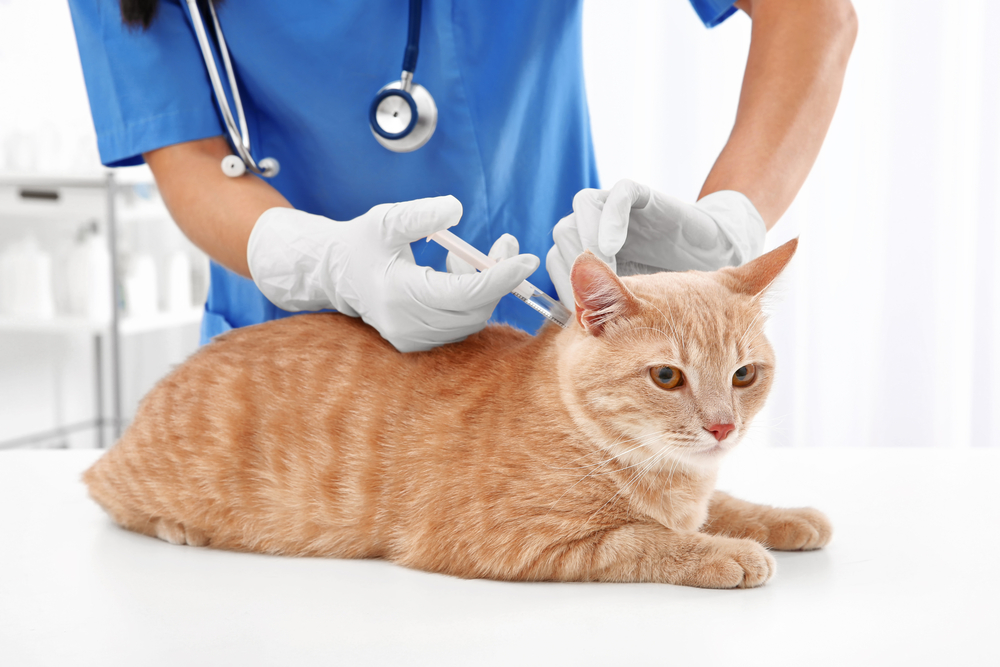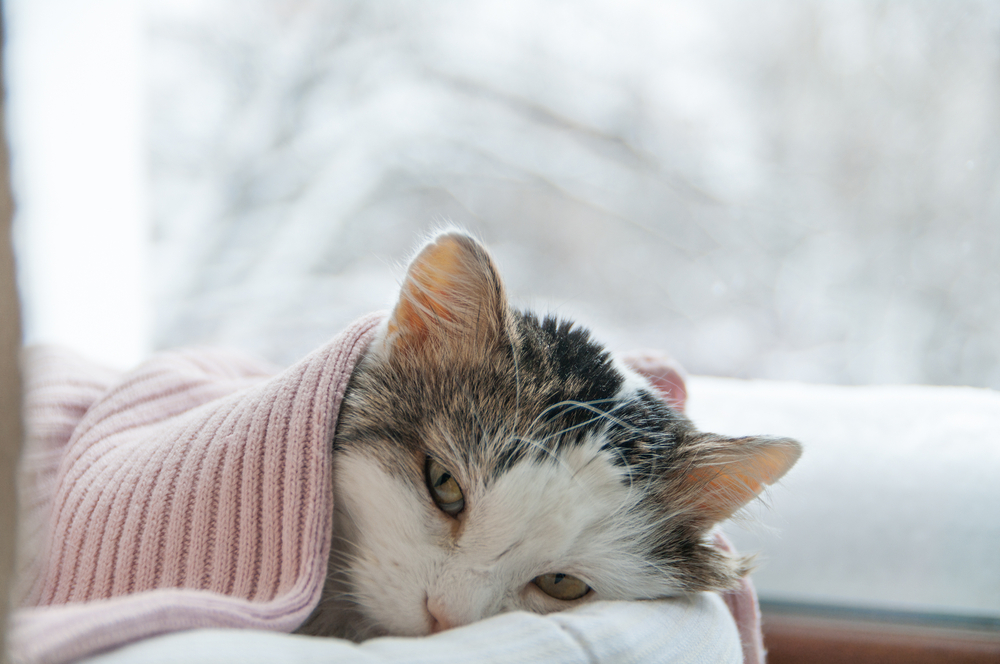Did you know that cats have their own versions of the common cold? You may be surprised to learn that healthy indoor cats can also fall victim to an infectious respiratory disease. Your cat may show only mild respiratory signs that resolve at home in a few days, or develop more serious complications. The Caldwell Animal Hospital team encourages you to learn more about illness signs and potential respiratory infections in your cat.
What are feline respiratory infection signs?
When you feel a cold coming on, you bring out the tissues for sneezing and congestion. Respiratory infection signs in your cat can be similar, and include:
- Sneezing
- Nasal discharge or congestion
- Runny eyes
- Squinting and eye inflammation
- Corneal ulcers
- Cough
- Hoarse voice
- Fever
- Decreased activity
- Decreased appetite
- Mouth ulcers
- Rapid or difficulty breathing
What causes feline respiratory infections?
Feline respiratory infection rates in some areas are more than 60%, which means your cat has a good chance of being exposed if they come in contact with another cat. Kittens are especially hard hit by respiratory infections because of their immature immune systems. The majority of feline respiratory infections are caused by feline herpesvirus type-1 and feline calicivirus. Other infectious agents include Chlamydophila felis, Bordetella bronchiseptica, and Mycoplasma.
- Feline herpesvirus — More than 95% of cats are exposed to feline herpesvirus (FHV) in their lifetime, and up to 80% may develop a lifelong infection. This feline respiratory virus can lie dormant, with 45% of infected cats having symptomatic flare ups under stress. Cat stressors include surgery, boarding, introducing a new cat, household changes, travel, or moving. An FHV complication can be painful corneal ulcers. FHV survives in the environment for up to 18 hours, and infected cats remain contagious, although vaccination can reduce viral shedding.
- Feline calicivirus — Feline calicivirus (FCV) affects up to 90% of cats in high density populations, such as shelters or breeding catteries, and 10% of cats in smaller multi-cat settings. FCV complications can be painful mouth ulcers and, in rare cases, pneumonia or systemic infection. FCV survives in the environment for up to 30 hours, and infected cats are contagious for several months after illness.
- Chlamydophila felis — Approximately 20% of cats with upper respiratory signs and 3% of healthy cats carry this bacterium, which primarily causes eye inflammation and discharge. C felis cannot survive in the environment, and requires close contact with other cats for transmission. Untreated cats can spread the infection to other cats for months.
- Bordetella bronchiseptica — Up to 5% of cats with respiratory infections in high density populations carry this bacterium, which can progress to breathing difficulty. B bronchiseptica survives for one to two weeks in the environment, and infected cats are contagious for several months after illness. Infected dogs can spread this bacterial disease to cats.
- Mycoplasma — This parasitic bacterium is widespread in healthy cats, but can cause clinical signs. Traditionally, Mycoplasma has been viewed as a secondary bacterium in a respiratory infection, but may be a primary cause if it spreads to the lungs.
How are feline respiratory infections diagnosed?
A thorough physical examination of your cat by a Caldwell Animal Hospital team member and your pet’s clinical signs are the first steps toward reaching a diagnosis and appropriate treatment plan. For complicated respiratory infections, PCR tests, virus isolation, or cultures can help fine-tune treatments, but certain infectious agents are carried by healthy cats, which can affect diagnostic test interpretation.
How are feline respiratory infections treated?
Treatment depends on the infection type and severity of illness signs. Antibiotic medications are the mainstay in controlling primary and secondary bacterial infections. Antiviral medications are available for acute FHV infections, but no safe, effective antiviral treatments are available for FCV. Non-steroidal anti-inflammatories may be recommended for fever or pain. Supportive care, which can include keeping your cat well-hydrated, providing highly palatable food or an appetite stimulant, running a vaporizer, using saline nose drops, and cleaning your cat’s eyes and nose, is essential to help your cat’s immune system fight the infection. If your cat is dehydrated, or showing severe illness signs, they may require hospitalization.
How can feline respiratory infections be prevented?

Vaccines for feline respiratory diseases do not provide 100% prevention, but can significantly lessen the severity of illness signs. Your cat’s vaccine requirements can be reviewed at their annual wellness exam. Feline herpesvirus type-1 and feline calicivirus are covered by the FVRCP vaccine. For high-density populations or multi-cat households, Chlamydophila felis or Bordetella bronchiseptica vaccinations may be appropriate. If you are adding a cat to your fur family, ensure the new cat is healthy and your current cat is fully vaccinated. Avoid spreading disease by washing your hands and changing your clothes when you come home from visiting another cat, especially if they are showing respiratory signs.
Although some “kitty colds” may resolve quickly at home, don’t hesitate to contact the Caldwell Animal Hospital team if you are concerned about respiratory disease signs and your cat.







Leave A Comment